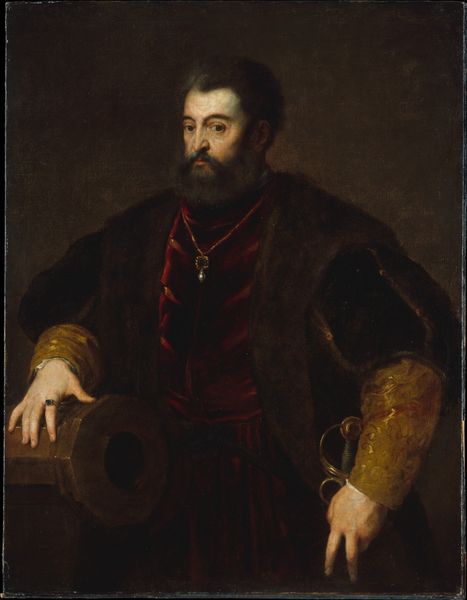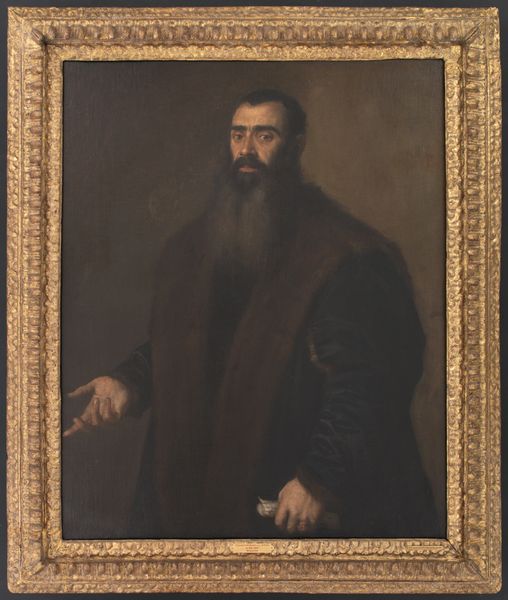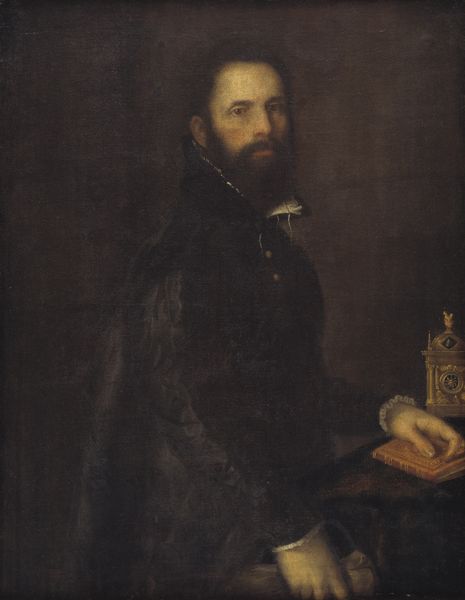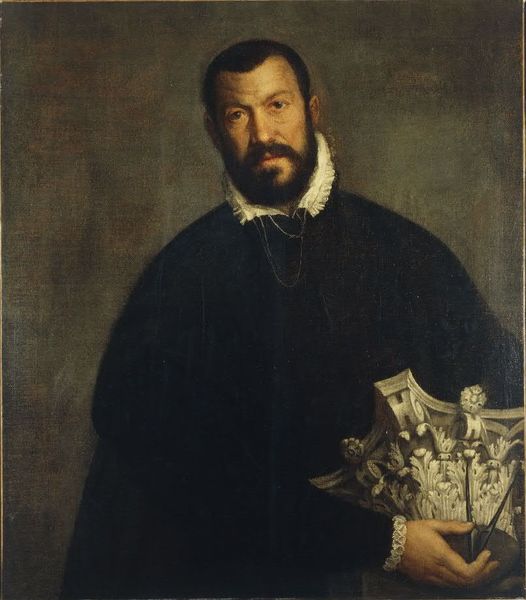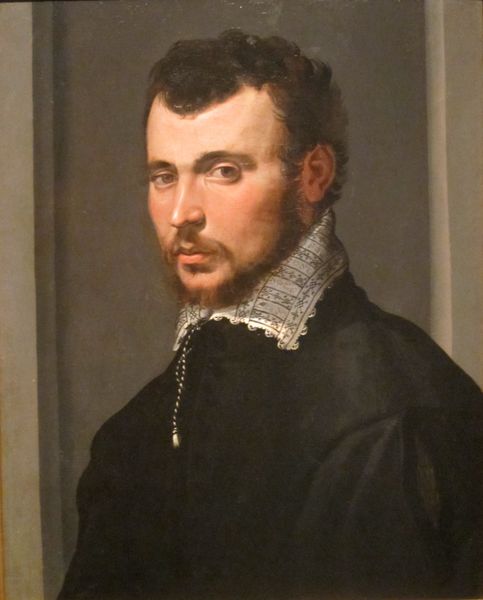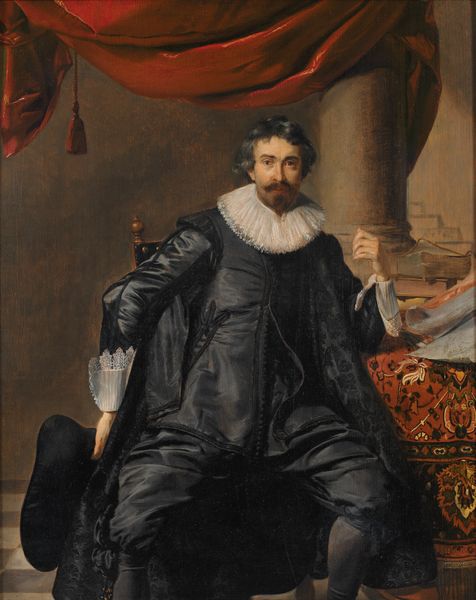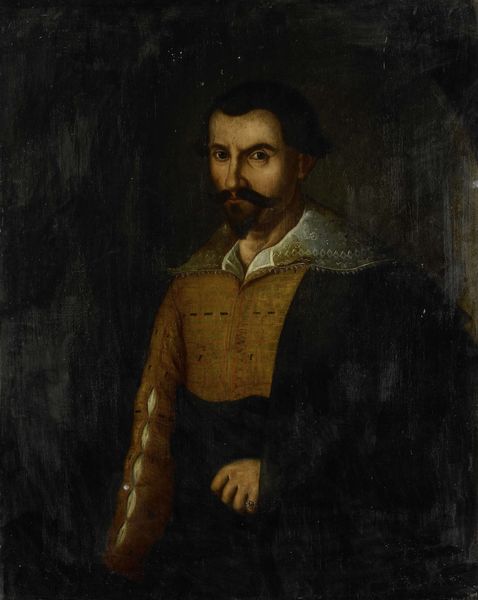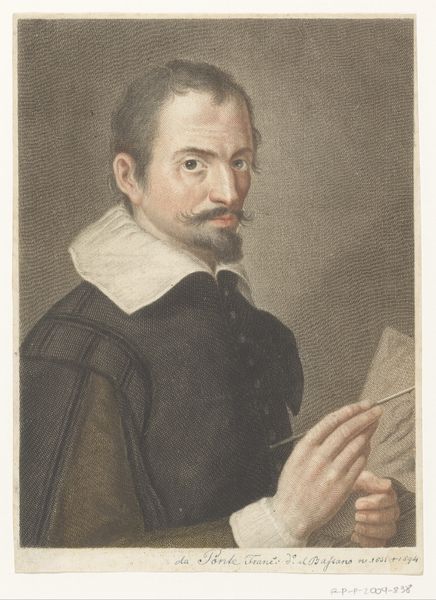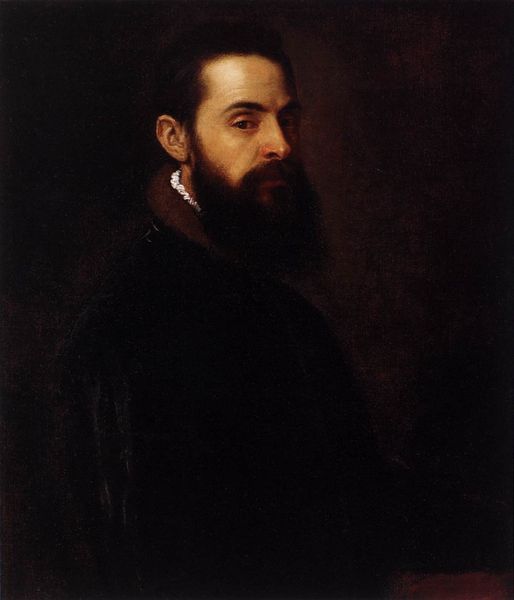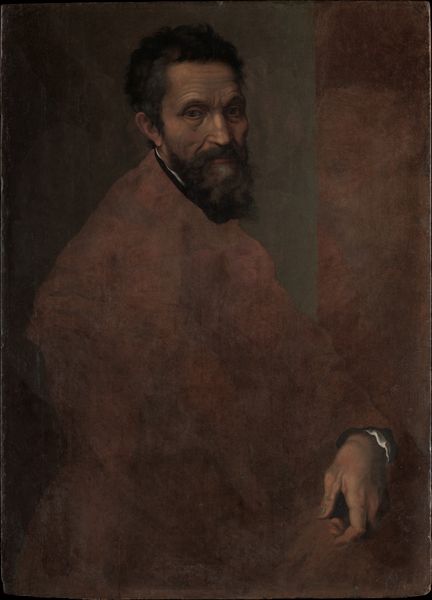
Portrait of a Knight of Malta, Probably Fra Jacopo Salviati 1566
0:00
0:00
painting
#
portrait
#
portrait
#
painting
#
mannerism
#
history-painting
Dimensions: 35 x 26 1/4 in. (88.9 x 66.7 cm)
Copyright: Public Domain
Editor: We're looking at Mirabello Cavalori's "Portrait of a Knight of Malta, Probably Fra Jacopo Salviati," painted in 1566. It’s oil on panel, and something about his expression—almost weary—really draws me in. What’s your take on this portrait, especially considering the historical context? Curator: It’s fascinating how portraits like this solidify power and identity. The Knights of Malta were a significant military and religious order, and Cavalori’s rendering emphasizes the sitter’s membership. Note the stark contrast of his white cross against the black tunic. This wasn’t just an aesthetic choice, but a deliberate representation of belonging and authority within that socio-political structure. How does the letter in his hand play into this image, do you think? Editor: Perhaps it symbolizes communication or directives received, emphasizing the knight’s role within a larger network of power? The fact that it is slightly crumpled also suggests that the communication contained in that letter carries some weight. Curator: Precisely. Consider how portraiture itself functioned within these circles. It’s less about capturing an individual likeness and more about crafting a public image, carefully curated to project power and status. Think about the patrons, the intended audience, and the subtle cues within the artwork meant to reinforce a certain narrative. Do you see anything else in the composition which reinforces this narrative? Editor: Now that you point it out, there is a very subdued colour palette, and even the light highlights certain features like the stark white cross to direct your gaze at the symbol of power and status. Overall, there seems to be very little focus on making the sitter appear as an individual. Curator: Exactly! The painting prompts us to consider the public role of art and the ways socio-political forces impact artistic expression. Editor: I see how a seemingly simple portrait can reveal so much about the sitter’s position and the artist’s intent in shaping their persona. Curator: Yes, it highlights the artist's role in visualizing the powerful while subtly promoting their political and ideological narratives through chosen images.
Comments
No comments
Be the first to comment and join the conversation on the ultimate creative platform.
